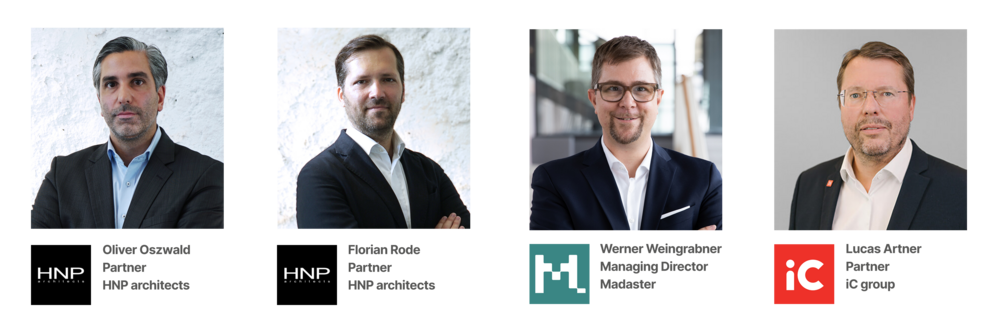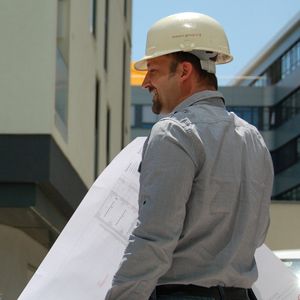The EU Circular Economy Action Plan and the Austrian Circular Economy Strategy define frameworks and goals that address the construction and real estate sectors. Time to explain the status quo and give an outlook on the limits and possibilities.
Mr. Weingraber, you have been successfully establishing your product "Madaster" in Austria for about half a year. Please tell us more about that.
Weingraber: Madaster is a material flow register that records materials and their quality. Therefore, buildings can be planned, optimised and evaluated in a circular way, and high-quality secondary materials can be obtained.
Why is your company involved in this area?
Oszwald: From approximately 2026 onwards, the digital building passport is expected to have an impact on new construction and renovation projects throughout Europe. In fact, many institutional building owners are already seeking to adopt this requirement earlier in order to ensure planning certainty and maintain value stability in accordance with regulatory mandates. As a result, an increasing number of our recent planning projects are focused on addressing this crucial topic.
Artner: The circular economy's role in building performance is a key aspect of the European Green Deal, as achieving climate protection goals is not possible without closed loops. Together, the building and infrastructure sectors account for over 50% of the total resource consumption on the continent. Addressing this issue is an integral part of the climate protection and corporate strategies of many of our clients. In addition to building construction, infrastructure structures such as railways and roads are also being considered. Given the much higher use of materials in civil engineering than in building construction, we see tremendous potential here to contribute to the transition.
What is the difference between a "conventional" and a cycle-capable construction?
Rode: We transform our object planning in such a way that, on the one hand, we ensure the future separability of building components and their layers and, on the other hand, we use materials that can be recycled and reused after the building is dismantled. Madaster enables us to use a generally recognised metric to record and further optimise the circular economy performance via the so-called circularity index.
Artner: In terms of materials, we also add embodied carbon - the environmental impacts associated with the raw materials and products, as well as their potential for recycling. Our goal is to achieve a recycling rate of over 80% by mass for future building dismantling and to incorporate as high a proportion of secondary raw materials as possible during construction. However, our efforts are limited by the currently available supply in the market. Networks such as Madaster provide not only exchange but also solutions to this issue. When combined with regulatory requirements and voluntary market standards, we have powerful tools at our disposal to significantly transform projects in terms of circular economy and sustainability.
Weingraber: Circularity is increasingly becoming an economically viable option. Sustainable planning and implementation, accompanied by proper documentation, can lead to reduced financing costs and significant residual value for the materials utilized, whether it be in production, sales, or financing.
Where do you see the project, which is ordinary by today's standards, in five or ten years?
Oszwald: We have completely integrated the required processes into our workflows. Every time a client incorporates this topic into their project, we take another step towards this goal. We anticipate that in approximately five years, it will be the market and legal norm in the majority of projects.
Artner: Besides planning, the execution phase, specifically the construction of buildings, holds significant potential. It is our responsibility, in collaboration with building owners and all planning partners, to create accessible options and solutions that encourages all participants in the supply chain to participate. Apart from circularity, the decarbonization of products, particularly in construction and logistics processes, presents significant challenges. If the entire value chain works together in this direction, it can be tackled effectively, albeit perhaps not entirely within five years, but most probably within ten.





